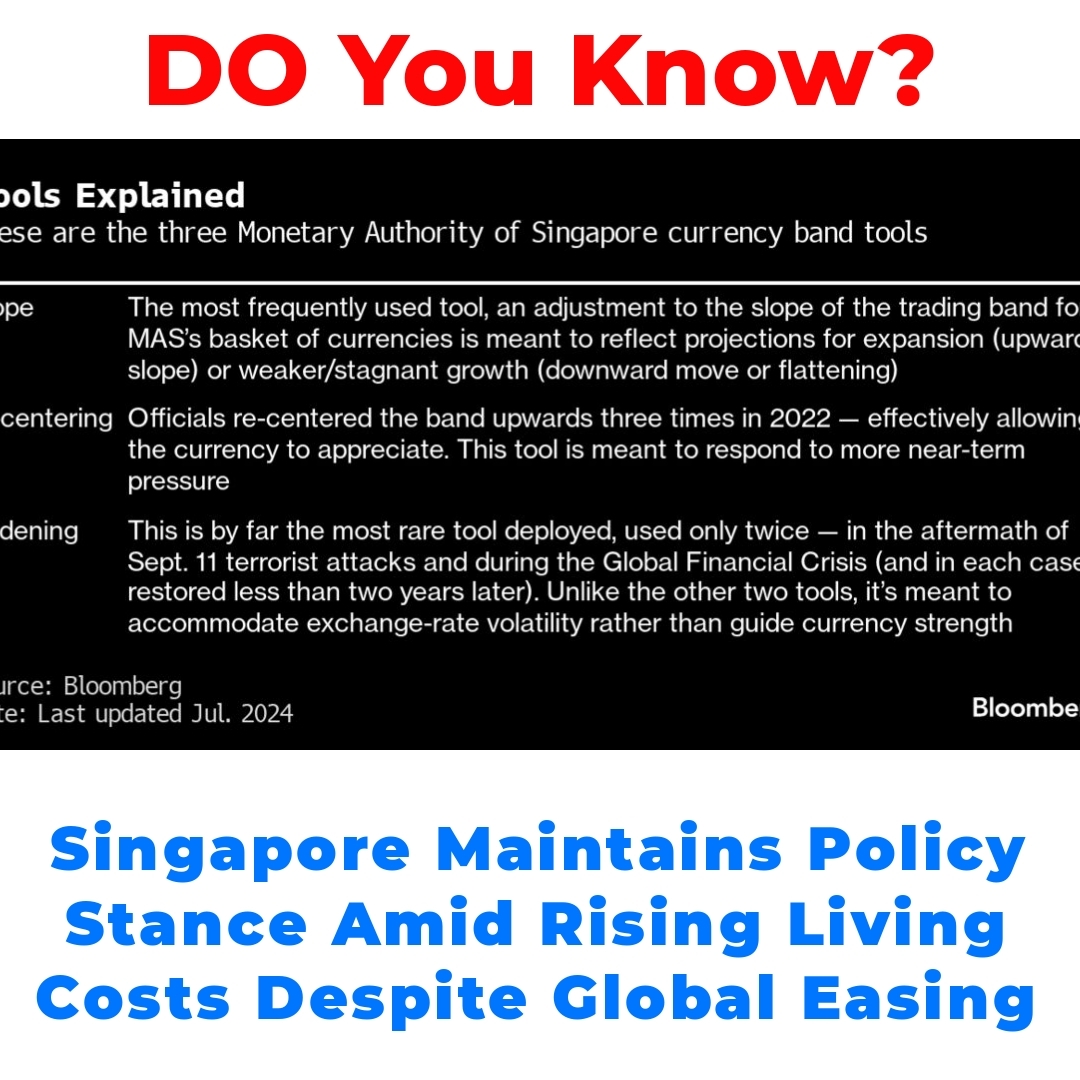Singapore’s monetary policy stands out amid global easing trends, emphasizing the importance of currency strength in managing living costs. As the region faces economic uncertainties, this article delves into the unique strategies adopted by the Monetary Authority of Singapore (MAS) and their implications for inflation, economic growth, and everyday living expenses.

Understanding Singapore’s Monetary Policy
Singapore’s Monetary Policy is crafted primarily to ensure price stability and support economic growth. It focuses on controlling inflation while keeping the currency strong, which is crucial for a small, open economy like Singapore’s. Over the years, the approach to monetary policy has evolved significantly, especially in response to global economic changes.
The key player in this process is the Monetary Authority of Singapore (MAS), which is responsible for formulating and implementing these policies. The MAS utilizes exchange rate management rather than interest rates as its main tool, making Singapore’s monetary policy somewhat unique compared to other nations.
Economic Policies and Their Impact
Singapore’s current economic policies aim to maintain a robust economy with a focus on sustainability. These policies overlap with Singapore Monetary Policy, particularly in how they both address inflation control. By controlling inflation, the MAS aims to ensure that living costs in Singapore remain manageable for residents.
For instance, when prices rise too quickly, it not only affects individual households but can also impact consumer spending and economic growth. Therefore, the intersection of economic policies and Singapore Monetary Policy is essential for maintaining overall economic health.
Currency Strength as a Tool for Economic Stability
The strength of Singapore’s currency plays a vital role in its economic stability. A strong Singapore dollar enhances the purchasing power of consumers, impacting living costs in Singapore directly. When the local currency holds its value against foreign currencies, imported goods become more affordable, which can help keep inflation at bay.
By contrast, countries facing currency fluctuations often experience rising living costs, making everyday expenses harder for their citizens. Therefore, the MAS’s efforts to maintain currency strength are not just about global standing but also about ensuring that residents can afford basic necessities.
Living Costs in Singapore: A Persistent Challenge
The current state of living costs in Singapore remains a topic of concern for many residents. Factors such as housing, food prices, and transportation contribute significantly to these costs. Despite a strong economy, these expenses can sometimes feel overwhelming.
High living costs challenge the effectiveness of monetary policy. Even with a strong currency, if prices continue to rise unchecked, it can lead to discontent among the public. Therefore, managing these costs while implementing effective monetary policies is crucial for the MAS and the overall health of Singapore’s economy.
Singapore’s Approach to Monetary Policy in 2023
In 2023, Singapore’s monetary policy has been proactive, with measures designed to navigate current economic uncertainties. With global trends leaning towards easing, Singapore has chosen to maintain a tightening stance to uphold currency strength and control inflation.
Current economic indicators suggest that these policies will have to continue adapting. If inflation rises or economic growth slows, the MAS may need to adjust its strategies. Still, a strong currency can potentially help alleviate rising living costs, supporting households and maintaining consumer confidence.
The Broader Implications of Singapore’s Monetary Policy
The implications of Singapore’s sustained monetary policy decisions extend beyond just the local economy. For instance, a stable currency can attract foreign investments, as investors seek environments where their capital retains value.
Moreover, it’s essential for policymakers to find a balance between promoting economic growth and addressing the cost of living concerns. If the focus solely shifts towards one aspect, it could lead to unintended consequences that might adversely affect both the economy and residents.
Conclusion
In summary, Singapore Monetary Policy plays a critical role in the current economic landscape, especially against the backdrop of global easing trends. The relationship between currency strength and living costs in Singapore remains a vital area of focus for the Monetary Authority of Singapore and policymakers.
As we look to the future, there’s a call for policymakers to carefully consider the long-term implications of their strategies. Maintaining a strong Singapore dollar while managing living costs will be vital for the country’s sustained economic health and the well-being of its residents.
Frequently Asked Questions
What is the primary goal of Singapore’s Monetary Policy?
The main goal of Singapore’s Monetary Policy is to ensure price stability and support economic growth. It focuses on controlling inflation while maintaining a strong currency, which is crucial for a small, open economy like Singapore’s.
Who is responsible for formulating and implementing Singapore’s Monetary Policy?
The Monetary Authority of Singapore (MAS) is the key player responsible for crafting and executing monetary policies in Singapore.
How does Singapore’s monetary policy differ from other countries?
Unlike many other nations that primarily use interest rates as a tool, Singapore’s monetary policy relies on exchange rate management to control inflation and ensure economic stability.
How do economic policies intersect with Singapore’s Monetary Policy?
Singapore’s economic policies work hand-in-hand with its Monetary Policy, especially regarding inflation control. By managing inflation, the MAS helps to keep living costs reasonable for residents.
How does the strength of the Singapore dollar affect the economy?
A strong Singapore dollar increases purchasing power for consumers, which makes imported goods more affordable and helps keep inflation low. This is vital for maintaining economic stability.
What are the main challenges regarding living costs in Singapore?
Living costs, driven by factors like housing, food prices, and transportation, present persistent challenges. High living costs can dilute the effects of monetary policy, even if the currency is strong.
What is Singapore’s current monetary policy stance in 2023?
In 2023, Singapore’s monetary policy has maintained a tightening stance to uphold currency strength and control inflation, despite global trends leaning towards easing.
What are the broader implications of Singapore’s Monetary Policy?
Sustained monetary policy decisions can attract foreign investments by offering stability. However, it’s essential to find a balance between promoting economic growth and addressing living costs to avoid negative consequences for residents.





